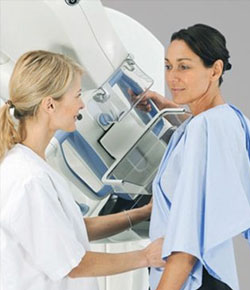
Mammography Is Done In Two Ways :
Screening mammography : where a routine test is done to check for any signs of cancer.
Diagnostic mammography: which is done when there is a lump in breast or any other symptoms of breast cancer like pain, nipple discharge etc.
How Should I Prepare For The Mammogram?
How Is Mammography Performed?
Mammography is performed on an outpatient basis. During mammography a female technologist will position your breast on a special platform and compress it softly with a plastic paddle. Then the x-ray is taken. The process is repeated in different positions and for the opposite breast.
What Will I Experience During & Aſter The Procedure ?
You will feel pressure on your breast as it is squeezed by compression paddle. Some women with sensitive breast may experience discomfort.
What Are The Benefits V/S Risks…??
Benefits : it increases detection of small tumours . When tumours are small, the woman has more treatment options. There is no risk associated with mammography . X-ray usually have no side effects in the typical diagnostic range for the examination. No radiation remains in body after an x-ray examination.
What Are Limitations Of Mammography ?
Sometimes initial mammography findings are not enough to determine the existence of a lesion with certainty. If a finding or spot seems suspicious, your radiologist may recommended further diagnostic studies. A normal breast look different for each woman on mammography & in women with increased breast density, it is difficult to see a small cancer on mammography. The appearance of image may be compromised if woman has undergone breast surgery or is having a breast implant. Inspite of few of these limitations , mammography is the best screening tool for breast cancer available today.
However, it dosen’t detect all breast cancers.
